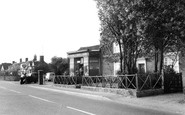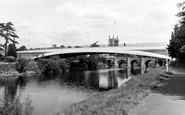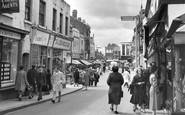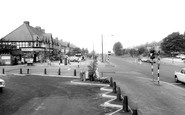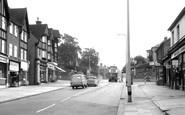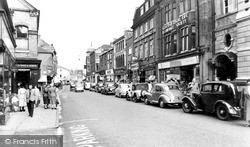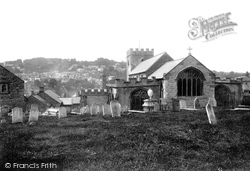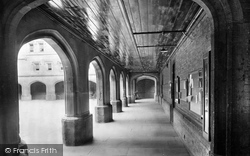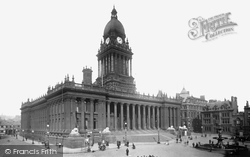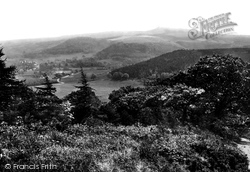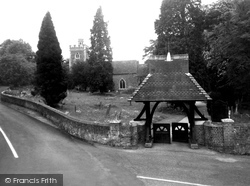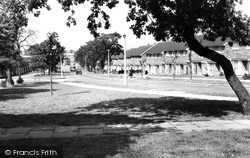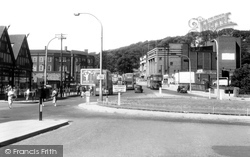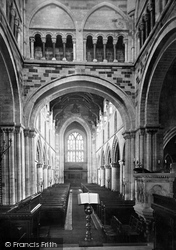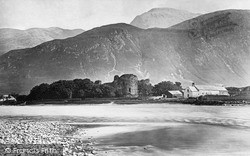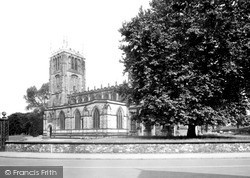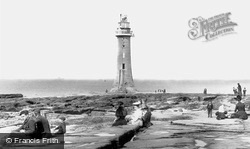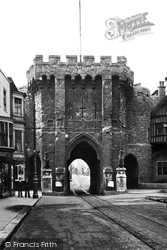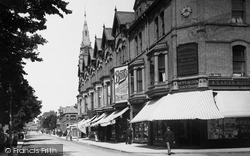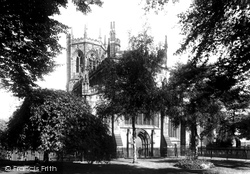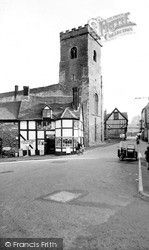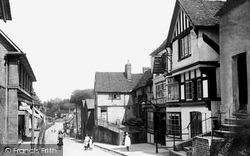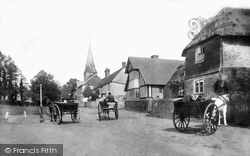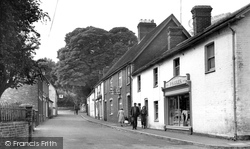Places
Sorry, no places were found that related to your search.
Photos
5 photos found. Showing results 581 to 5.
Maps
83 maps found.
Books
Sorry, no books were found that related to your search.
Memories
1,127 memories found. Showing results 291 to 300.
Commonside East
Yes Bob I remember the grocer and his guard goose. I lived at 81 Commonside East for many years, living above the sweet shop across the alley almost next door. The goose way a worry. Having returned a few years ago, much had changed ...Read more
A memory of Mitcham in 1957 by
A Memory Of Westbury Village 1
The two principal grocery shops in Westbury village, as it was still usually called, in the late 1950s and early 1960s were the Co-operative grocery by the corner of Church Road -- the Co-operative butcher on ...Read more
A memory of Westbury on Trym in 1957 by
My Home From 1947 1969
I was born here in Newton Green and lived in the house just visible on the left - the last one. It was called Cotswold. The village shop was run by Mark Wilson and that could be him in the photograph, tinkering with the ...Read more
A memory of Newton in 1957 by
A Modern Intrusion
When I first returned to Hereford from Canada in 1979, after a 20 year absence, I was shocked to see the new modern designed Greyfriars Bridge crossing the river not far from the almost 2000 year old Roman Bridge. On the left bank ...Read more
A memory of Hereford in 1957 by
Strolling In The Town
The person in the white macintosh walking towards the camera is myself, Bob Vincent with a friend, Peter Watkins. I lived at 4, Shepperton Street, Chllvers Coton (opposite the Vicarage) and Peter lived in Coton Road close to the ...Read more
A memory of Nuneaton in 1957 by
Post Office
We moved to nearby Kingshurst and the Post Office on the corner of Hurst Lane was the nearest for collecting the much needed Family Allowance. It was a good walk as the buses were not very frequent. When I was newly married 13 ...Read more
A memory of Castle Bromwich in 1956 by
Stone In The 1950s
I am now 57 years of age, and live in Australia. I was born in Stone, Stafforshire in 1949 and would love to go back and visit. As a child I remember walking along the canal and standing watching as a blacksmith mended a horse's shoe. ...Read more
A memory of Stone in 1956 by
The Bushey Arches Traffic!
I first saw Oxhey in 1956 when I would take the train from Hatch End to Bushey & Oxhey station (as it was called then) on Saturday afternoons to see Watford play football at Vicarage Road in the old Third Division South. The ...Read more
A memory of Oxhey in 1956 by
The Shops And Doctors At Sandiway 1956
We first arrived in Sandiway in 1956. I remember getting off the bus at the top of Mere Lane and walking down towards our new home in Cherry Lane. The house was a 'tied house' belonging to the ICI and our ...Read more
A memory of Sandiway in 1956 by
Joe Wyche
I remember Joe Wyche very, very well; a very progressive man, and to be frank I owe my success to him. At age thirteen he hauled me into his office to inform me I was lazy and he was going to make me work. In consequence I did work for ...Read more
A memory of Poynton in 1956 by
Captions
1,233 captions found. Showing results 697 to 720.
The arched Venetian windows of a building of 1880 are still fairly staid, but in 1983 a ritzy V-shaped window would replace the flat front so the customers could see almost all round the display of Foster
The tower was thought to date from the 12th century, but repairs in the winter of 1994 revealed a much earlier window, dating from about AD 980, in the south wall of the ringing chamber on the second
Cloisters with studies above run to the south and east of Old Quad, with a tall arch forming the entrance to the School House dining hall at the south-eastern corner.
At the time of the opening of the Leeds Town Hall in 1858, an arch commemorating Queen Victoria's visit was erected in north Leeds.
The arched Venetian windows of a building of 1880 are still fairly staid, but in 1983 a ritzy V-shaped window would replace the flat front so the customers could see almost all round the display of Foster
These medieval arches and walls survive because they were incorporated into the Grammar (Martin Andrew) The castle's medieval motte became a prospect mound with a garden room on top in the 19th
commissioned the renowned Victorian architect, Alfred Waterhouse (who designed the Natural History Museum in London) to design a new mansion, Hutton Hall, which was completed in 1867; it replaced a much
An angel has appeared from a former house in the south chapel; the pulpit is dated 1628, and has blank arches and arabesque decoration; the back panel upper half has caryatids and the tester has strapwork
Two of his later factories survive in Leigh Street (though they are no longer furniture factories): a three-storey one of 1901, brick built, and a much more ambitious one of 3 storeys built in
Whitmore Way was the site of Basildon's first proper shopping parade: this included a post office, a Martin's newsagent and a much-needed chip shop.
Between the two buildings runs the railway, at a much lower level. On the opposite side of the road stands the Plaza cinema with the Hippodrome theatre next to it.
A striking feature of this picture is the contrast between the rounded, early Norman arch in the foreground and the taller, narrow pointed arch of a later period at the western end of the nave.
It cannot be claimed that Stafford celebrated the event with much originality or enthusiasm.
1645, after a forced march covering 30 miles in 36 hours over difficult terrain in some of the worst weather in living memory, that the great Marquess of Montrose, with fewer than 2000 men, defeated a much
fabric of the present building is known to date from the 16th century, there is internal evidence in the roof beams and fireplaces, and in the large use of timber on one of the external walls, of a much
Between the Conservative Club building and the stuccoed, wisteria-clad cottages at the Falconer Road end of the High Street, rises the Coronation Arch marking the accession of Queen Elizabeth II to the
This was a period when thousands of hard-working Liverpudlians took their families on a much-needed break.
Slightly reminiscent of a triumphal arch and a famous landmark in Southampton for 800 years or more, Bargate is an appropriate place to begin a walk along what is left of the city walls.
Here we see solid Victorian architecture in this tree-lined street, with one well-established family retail chain much in evidence.
Much of the structure dates from the 14th century, although it is thought that building work was probably interrupted by the Black Death and only resumed much later that same century.
Much Wenlock is the most delightfully evocative town, so much so that Ellis Peters (the local author of the Brother Cadfael detective books set in the 12th century) once said of the town that you almost
Although there has been much expansion in Oxted, this part, known as Old Oxted, has retained much of its charm.
Its brand new village hall, right of centre, is outwardly much the same today although the inside is much changed.
Thomas Hardy writes of a journey into Cranborne in 'Tess of the D'Urbervilles', where the present Fleur-de-Lys tavern is depicted as the much less salubrious 'Flower-de-Luce'.
Places (0)
Photos (5)
Memories (1127)
Books (0)
Maps (83)



